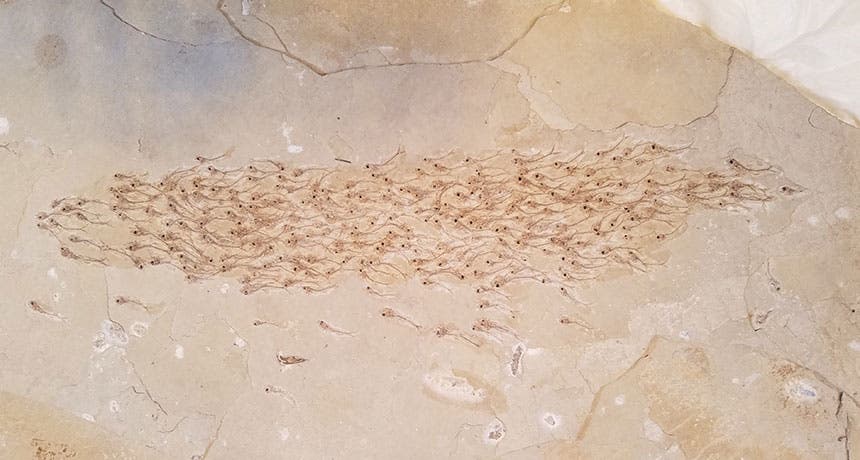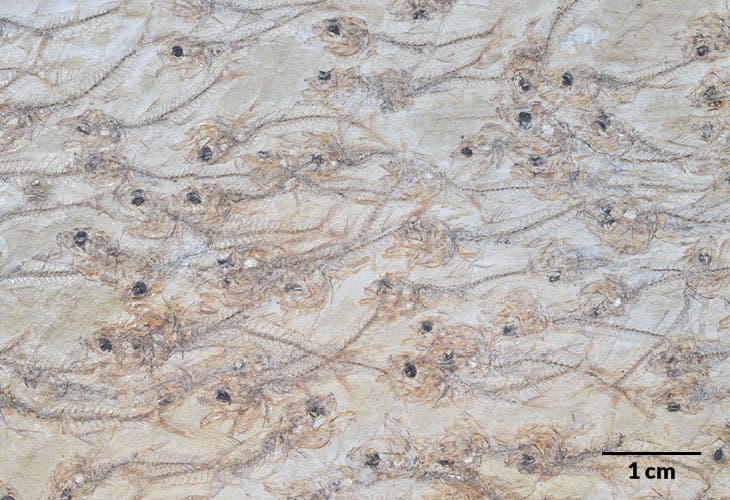This stunning fossil could teach us a lot about how fish coordinate collective movement

Some 50 million years ago, a school of extinct Erismatopterus levatus had a catastrophic day. It’s not exactly what brought their demise, although the sudden collapse of a dune seems quite likely. Whatever it was, it buried them in an instant, in excellent conditions for fossilization.
The fossil captures a mass of 259 fish swimming in the same direction, in the same manner, that many species of fish do so today. This type of collective movement, called schooling, reduces the chances of predation, while also increasing hydrodynamic efficiency, foraging success, and increased ease of finding a mate.
However, while this feature is well-documented by biologists, it’s not exactly clear when in its evolutionary history it emerged.
Collective motion by animal groups can emerge from simple rules that govern each individual’s interactions with its neighbours, so it was expected to evolve relatively early, but the timing remained uncertain. This fossil at least offers a timeline milestone, showing that the behavior evolved at least during a period called the Eocene, 50 million years ago.

The Eocene lasted from 56 to 33.9 million years ago. It is a geological period which featured a wide variety of different climate conditions that includes the warmest climate in the past 66 million years but ended in an icehouse climate. The oldest known fossils of most of the modern mammal orders appear during the Eocene, and notably, the Eocene oceans were warm and teeming with fish and other sea life.
Nobuaki Mizumoto, a behavioral ecologist at Arizona State University in Tempe, found the fossil in a museum in Katsuyama. Mizumoto usually studies how termites build and work together, but took advantage of the opportunity to study describe collective behavior in these ancient fish.
Much more work and many more time constraints are needed to assess exactly when and how schooling began and how similar actions evolved in other types of creatures. Mizumoto says that it would be very useful to study similar “mass” fossils (not only fossilized fish but also shrimp, mammals, and dinosaurs), to “better understand palaeoecology and achieve the reconstruction of the evolutionary process behind coordinated collective motion.”
Unfortunately, however, these types of fossils don’t come across all that often, and paleontologists will have to get a bit lucky.
Journal Reference: Mizumoto et al. Inferring collective behavior from a fossilized fish shoal. Proceedings of the Royal Society B. Published online May 29, 2019. doi:10.1098/rspb.2019.0891.



